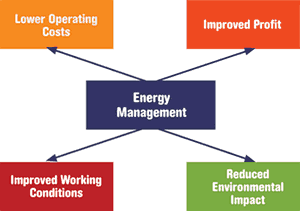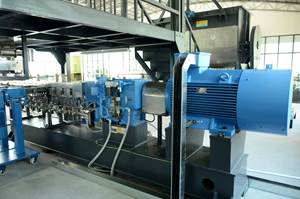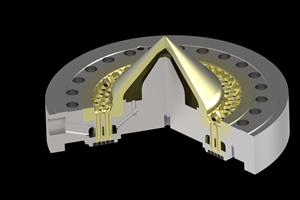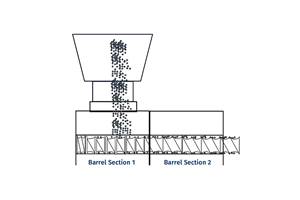Introduction to Energy Management For Plastics Processors
Energy efficiency is one of the “hot” topics of the 21st century and plastics processors around the world are trying to come to terms with it.
Energy efficiency is one of the “hot” topics of the 21st century and plastics processors around the world are trying to come to terms with it. Ten years ago, a column on this subject would have attracted scant management interest. Today, energy management is not just a “green” issue, or a “carbon footprint” issue, it is a very real business issue and, in many cases, a matter of survival.
Price increases in energy and the desire to reduce greenhouse gas emissions have raised the profile of energy management in the plastics processing sector. This has pushed many businesses into action, but all too often their efforts have been poorly directed or ineffective. Sadly, this has led some firms to abandon their efforts to improve energy management, even though the basic techniques are essentially very simple and easily applied. Where managers have been well informed and have diligently applied the basics, the results have been exceptional—usage reductions of 30% are not uncommon, and some sites have achieved even greater savings. As we shall see in future installments of this column, simple techniques can have dramatic results.
CHANGE OF FOCUS NEEDED
Western industry is highly focused on the cost of labor and sees the growth in volume of imported products as being due purely to the lower labor costs of overseas suppliers. The reality is that labor costs are, and always have been, a minor component of the overall cost of most plastics products. Direct labor has shrunk from an average of 25% of manufacturing costs in 1960 to 10% today. The cost of materials and overheads are far more important in the total product cost, but Western industry still focuses overwhelmingly on labor cost even as the overhead and energy costs rise.
In the East, however, their low labor costs mean that in many cases energy costs are already higher than labor costs. Some of the most energy-efficient sites in the world are already in the East. In addition to a labor cost advantage, they are also gaining an energy cost advantage.
Energy costs now represent the third largest variable cost (after materials and direct labor) for most plastics plants, and in some cases energy is the second largest variable cost. This is particularly true for plants that have low direct labor costs.
WHY BOTHER WITH ENERGY?
Energy costs have risen dramatically in the last five to 10 years, and this is the primary reason for increased interest in energy management. It might be nice to think that plastics processors are driven by a desire to become “greener,” but the most certain way to attract attention in any business is to affect the financial results, and the increased cost of energy is certainly attracting attention.
In the last few months, energy costs have dropped dramatically from their recent highs. Manufacturers should not be lulled into assuming that the days of cheap energy have returned indefinitely. The current economic recession will end, as they all do, and the global engine of economic growth will pick up steam again—and with it will come increased demand for energy, especially in the emerging economies of China and India. Global energy prices will then surely go back up.
For the majority of plastics processing plants, the cost of energy is in the region of 4% to 8% of sales and for some firms is approximately equal to the profit level. In low-margin sectors of plastics processing, such as packaging and automotive parts, the cost of energy can be greater than the profit margin.
The possible savings from good energy management are in the range of 30% of current energy expenditures for most plastics processors. In rare extreme cases, energy savings of up to 50% have been identified with little difficulty.
These savings are virtually irrespective of the industry sector or process used. One particular plastics process does not waste more energy than another. It is not the process but the management that makes the difference.
The potential for 30% average savings in energy cost is achievable in equal shares through management, maintenance, and investment. Simple recognition that the rules have changed and that managing energy usage with about the same degree of effort that management devotes to managing direct labor can produce savings of up to 10% of energy usage.
Another 10% energy savings is available with simple quick-fix actions such as controlling the use of utilities and services (like compressed air) in both the process and the plant at large. This includes small investments in emerging technologies such as variable-speed drive control of water pumps and air-handling fans. Maintenance investments are defined as those whose expected payback is less than one year, regardless of the amount invested.
The final 10% saving is possible through investment in energy-efficient processing technologies and, just as important, through effective management of these technologies.
The majority of all these savings can be delivered through a balanced combination of no-cost, low-cost, and investment (maintenance or capital) actions. The average payback for all investments in energy management is, in our experience, in the region of six to nine months.
The next column in this series will explore the process of identifying your plant’s “energy fingerprint.”
About The Author
Dr Robin Kent is founder and managing director of Tangram Technology Ltd. in Hitchin, Herts., U.K. Tangram provides consulting engineering, training, and design services to plastics processors. Kent has been involved in injection molding and extrusion for 36 years and has worked as technical director for several major plastics processing companies in the U.K. and Europe. He can be reached at rkent@tangram.co.uk or visit www.tangram.co.uk. Articles in this series are adapted from his book, Energy Management in Plastics Processing (2008, 265 pages, www.pidbooks.com).
Related Content
Sustainability Among the Many Niches at Niche Polymer
Founded in 1987, Niche Polymer continues to grow—both organically and through acquisition—by focusing its product-development efforts on ever-changing market needs. Adding value to both industrial and post-consumer scrap is a growing part of this effort.
Read MoreWhat to Know About Your Materials When Choosing a Feeder
Feeder performance is crucial to operating extrusion and compounding lines. And consistent, reliable feeding depends in large part on selecting a feeder compatible with the materials and additives you intend to process. Follow these tips to analyze your feeder requirements.
Read MoreHow to Maintain Pelletizing Quality When Acid Attacks
Developments in the chemistry of polymers and additives have made corrosion a real problem in pelletizers. Here’s how to ward it off.
Read MoreHow to Configure Your Twin-Screw Extruder -- Part 2
Follow these tips to configure your twin-screw elements to promote feeding and solids conveying.
Read MoreRead Next
How Polymer Melts in Single-Screw Extruders
Understanding how polymer melts in a single-screw extruder could help you optimize your screw design to eliminate defect-causing solid polymer fragments.
Read MoreLead the Conversation, Change the Conversation
Coverage of single-use plastics can be both misleading and demoralizing. Here are 10 tips for changing the perception of the plastics industry at your company and in your community.
Read MoreWhy (and What) You Need to Dry
Other than polyolefins, almost every other polymer exhibits some level of polarity and therefore can absorb a certain amount of moisture from the atmosphere. Here’s a look at some of these materials, and what needs to be done to dry them.
Read More



























.png;maxWidth=970;quality=90)